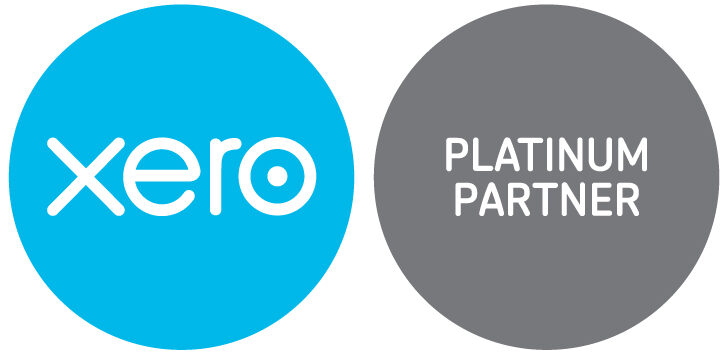More details have been released about how the Coronavirus Job Retention Scheme will work in practice, who qualifies and how you make a claim.
The scheme will be a temporary scheme open to all UK employers for at least three months starting from 1 March 2020. It is hoped that payments will commence in before the end of April. It is designed to support all employers whose operations have been severely affected by coronavirus (COVID-19).
Employers will use a portal to claim for 80% of furloughed employees’ (employees on a leave of absence) usual monthly wage costs, up to £2,500 a month, plus the associated Employer National Insurance contributions and minimum automatic enrolment employer pension contributions on that wage. Employers can use the scheme at any time during the period that it remains open.
The scheme is open to all UK employers that had a PAYE payroll scheme on 28 February 2020.
Who is eligible to claim?
Any UK organisation with employees can apply, provided they have a UK bank account. The list of eligible organisations includes:
- businesses
- charities
- recruitment agencies (agency workers paid through PAYE)
- public authorities
Employees you can claim for
Furloughed employees must have been on your PAYE payroll on 28 February 2020, and can be on any type of employment contract, including:
- full-time employees
- part-time employees
- employees on agency contracts
- employees on flexible or zero-hour contracts
The scheme also covers employees who were made redundant since 28 February 2020, provided they are rehired by the organisation they worked for on 28th February 2020.
To be eligible for the subsidy, when on furlough, an employee can not undertake work for or on behalf of the organisation. This includes providing services or generating revenue. While on furlough, the employee’s wage will be subject to usual income tax and other deductions.
If an employee continues to work, but on reduced hours, or for reduced pay, they will not be eligible for this scheme and they will continue to be paid by the employee through payroll under the terms of their contract.
Employers should discuss with their staff and make any changes to the employment contract by agreement. When employers are making decisions in relation to the process, including deciding who to offer furlough to, equality and discrimination laws will apply in the usual way.
To be eligible for the subsidy employers must write to their employee confirming that they have been furloughed and keep a record of this communication.
Employees hired after 28 February 2020 cannot be furloughed.
You do not need to place all employees on furlough. However, those employees who are placed on furlough cannot undertake any work for the organisation that furloughs them or any connected organisation.
Employee’s on unpaid leave
Employees on unpaid leave cannot be furloughed, unless they were placed on unpaid leave after 28 February.
Employee’s on Statutory Sick Pay
Employees on sick leave or self-isolating should get Statutory Sick Pay, but can be furloughed after this.
Employees who are shielding in line with public health guidance can be placed on furlough.
Employee’s with more than one job
If your employee has more than one employer they can be furloughed for each job. Each job is separate, and the cap applies to each employer individually.
Employee’s who do volunteer work or training
A furloughed employee can take part in volunteer work or training, as long as it does not provide services to or generate revenue for, or on behalf of your organisation.
If workers are required to complete online training courses whilst they are furloughed, then they must be paid at least the National Minimum Wage for the time spent training, even if this is more than the 80% of their wage that will be subsidised.
Employee’s on Maternity Leave, contractual adoption pay, paternity pay or shared parental pay
Individuals who are on or plan to take Maternity Leave must take at least 2 weeks off work (4 weeks if they work in a factory or workshop) immediately following the birth of their baby. This is a health and safety requirement. In practice, most women start their Maternity Leave before they give birth.
If your employee is eligible for Statutory Maternity Pay (SMP) or Maternity Allowance, the normal rules apply, and they are entitled to claim up to 39 weeks of statutory pay or allowance.
Employees who qualify for SMP, will still be eligible for 90% of their average weekly earnings in the first 6 weeks, followed by 33 weeks of pay paid at 90% of their average weekly earnings or the statutory flat rate (whichever is lower). The statutory flat rate is currently £148.68 a week, rising to £151.20 a week from April 2020.
If you offer enhanced (earnings related) contractual pay to women on Maternity Leave, this is included as wage costs that you can claim through the scheme.
The same principles apply where your employee qualifies for contractual adoption, paternity or shared parental pay.
What you can claim
Employers need to make a claim for wage costs through this scheme.
You will receive a grant from HMRC to cover the lower of 80% of an employee’s regular wage or £2,500 per month, plus the associated Employer National Insurance contributions and minimum automatic enrolment employer pension contributions on that subsidised wage. Fees, commission and bonuses should not be included.
At a minimum, employers must pay their employee the lower of 80% of their regular wage or £2,500 per month. An employer can also choose to top up an employee’s salary beyond this but is not obliged to under this scheme.
Full time and part time employees
For full time and part time salaried employees, the employee’s actual salary before tax, as of 28 February should be used to calculate the 80%. Fees, commission and bonuses should not be included.
Employees whose pay varies
If the employee has been employed (or engaged by an employment business) for a full twelve months prior to the claim, you can claim for the higher of either:
- the same month’s earning from the previous year
- average monthly earnings from the 2019-20 tax year
If the employee has been employed for less than a year, you can claim for an average of their monthly earnings since they started work.
If the employee only started in February 2020, use a pro-rata for their earnings so far to claim.
Once you’ve worked out how much of an employee’s salary you can claim for, you must then work out the amount of Employer National Insurance Contributions and minimum automatic enrolment employer pension contributions you are entitled to claim.
Employer National Insurance and Pension Contributions
All employers remain liable for associated Employer National Insurance contributions and minimum automatic enrolment employer pension contributions on behalf of their furloughed employees.
You can claim a grant from HMRC to cover wages for a furloughed employee, equal to the lower of 80% of an employee’s regular salary or £2,500 per month, plus the associated Employer National Insurance contributions and minimum automatic enrolment employer pension contributions on paying those wages.
You can choose to provide top-up salary in addition to the grant. Employer National Insurance Contributions and automatic enrolment contribution on any additional top-up salary will not be funded through this scheme. Nor will any voluntary automatic enrolment contributions above the minimum mandatory employer contribution of 3% of income above the lower limit of qualifying earnings (which is £512 per month until 5th April and will be £520 per month from 6th April 2020 onwards).
Information you’ll need to make a claim
Employers should discuss with their staff and make any changes to the employment contract by agreement. Employers may need to seek legal advice on the process. If sufficient numbers of staff are involved, it may be necessary to engage collective consultation processes to procure agreement to changes to terms of employment.
To claim, you will need:
- your PAYE reference number
- the number of employees being furloughed
- the claim period (start and end date)
- amount claimed (per the minimum length of furloughing of 3 weeks)
- your bank account number and sort code
- your contact name
- your phone number
You will need to calculate the amount you are claiming. HMRC will retain the right to retrospectively audit all aspects of your claim.
Claim
You can only submit one claim at least every 3 weeks, which is the minimum length an employee can be furloughed for. Claims can be backdated until the 1 March if applicable.
What to do after you’ve claimed
Once HMRC have received your claim and you are eligible for the grant, they will pay it via BACS payment to a UK bank account.
You should make your claim in accordance with actual payroll amounts at the point at which you run your payroll or in advance of an imminent payroll.
You must pay the employee all the grant you receive for their gross pay, no fees can be charged from the money that is granted. You can choose to top up the employee’s salary, but you do not have to.
When the government ends the scheme
When the government ends the scheme, you must make a decision, depending on your circumstances, as to whether employees can return to their duties. If not, it may be necessary to consider termination of employment (redundancy).
Employees that have been furloughed
Employees that have been furloughed have the same rights as they did previously. That includes Statutory Sick Pay entitlement, maternity rights, other parental rights, rights against unfair dismissal and to redundancy payments.
Once the scheme has been closed by the government, HMRC will continue to process remaining claims before terminating the scheme.
Income tax and Employee National Insurance
Wages of furloughed employees will be subject to Income Tax and National Insurance as usual. Employees will also pay automatic enrolment contributions on qualifying earnings, unless they have chosen to opt-out or to cease saving into a workplace pension scheme.
Employers will be liable to pay Employer National Insurance contributions on wages paid, as well as automatic enrolment contributions on qualifying earnings unless an employee has opted out or has ceased saving into a workplace pension scheme.
Tax Treatment of the Coronavirus Job Retention Grant
Payments received by a business under the scheme are made to offset these deductible revenue costs. They must, therefore, be included as income in the business’s calculation of its taxable profits for Income Tax and Corporation Tax purposes, in accordance with normal principles.
Businesses can deduct employment costs as normal when calculating taxable profits for Income Tax and Corporation Tax purposes.







 Production
Production